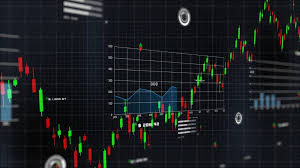
Mastering Trading Crypto Charts: The Ultimate Guide
When it comes to cryptocurrency trading, one of the crucial elements that traders must familiarize themselves with is the art of interpreting Trading Crypto Charts visit website. Whether you are a novice or an experienced trader, understanding how to read and analyze these charts can significantly impact your trading performance. In this guide, we will explore the various components of crypto charts, different types of charts, and effective strategies to make the most out of your trading experience.
Understanding Crypto Charts
Crypto charts are visual representations of the price movements of cryptocurrencies over a specific period. They provide valuable insights into market trends, helping traders make informed decisions. The primary components of a cryptocurrency chart include:
- Timeframe: Refers to the period over which price movements are measured. Common timeframes include 1-minute, 5-minute, hourly, daily, and weekly charts.
- Price: The vertical axis indicates the price of the cryptocurrency, while the horizontal axis represents time.
- Volume: Often shown as a histogram at the bottom of the chart, indicating the trading volume for a specific period.
Types of Crypto Charts
There are several types of charts traders use to analyze price movements:
1. Line Charts
Line charts display the closing prices over a specific timeframe. They are simple and provide a clear view of the trend direction but can lack detail regarding price fluctuations within the timeframe.
2. Bar Charts
Bar charts provide more detail than line charts by displaying Open, High, Low, and Close (OHLC) prices for a specified period. Each bar represents a specific timeframe, and the length of the bar shows the price movement.
3. Candlestick Charts
Candlestick charts have gained popularity due to their ability to convey more information at a glance. Each candlestick shows the same OHLC data as the bar chart but in a visually appealing format. The body of the candle indicates the price movement, while the wicks show the high and low prices during the period.
Reading Trading Crypto Charts
Understanding how to read trading crypto charts involves recognizing patterns and indicators that can signal potential future price movements. Here are several key concepts:
1. Support and Resistance
Support is a price level where a downturn tends to pause due to demand. Resistance is a level where an uptrend may stall due to selling pressure. Identifying these levels allows traders to anticipate price movements and set entry and exit points.

2. Trend Lines
Drawing trend lines on your charts can help visualize the direction of the market’s momentum. An upward trend line connects the low points, indicating a bullish trend, while a downward trend line connects high points, indicating a bearish trend.
3. Chart Patterns
Common chart patterns, such as head and shoulders, double tops, and flags, can provide insight into potential price reversals or continuations. Learning to identify these patterns can be crucial for making predictions.
Technical Indicators
Technical indicators are statistical calculations based on price and volume, helping traders analyze trends and market conditions. Some widely used indicators include:
1. Moving Averages
Moving averages smooth out price data to identify trends. The Simple Moving Average (SMA) and Exponential Moving Average (EMA) are two common types.
2. Relative Strength Index (RSI)
The RSI measures the speed and change of price movements, helping identify overbought or oversold conditions. An RSI above 70 indicates overbought conditions, while below 30 indicates oversold.
3. MACD (Moving Average Convergence Divergence)
MACD is a trend-following momentum indicator that shows the relationship between two moving averages of a security’s price. It helps identify potential buy and sell signals.
Developing a Trading Strategy
To leverage the insights gained from crypto charts effectively, traders should develop a comprehensive trading strategy. This should include:
- Risk Management: Setting stop-loss and take-profit levels to manage potential losses and secure gains.
- Entry and Exit Points: Defining clear criteria for when to enter and exit trades based on chart analysis.
- Continuous Learning: Staying updated on market news, trends, and chart analysis techniques to adapt to ever-changing market conditions.
Practical Tips for Successful Trading
Here are some practical tips to enhance your trading experience:
- Practice with Demo Accounts: Before investing real capital, use demo accounts to practice your chart reading and trading strategies.
- Stay Emotionally Detached: Avoid making impulsive decisions based on emotions; stick to your trading plan.
- Use Multiple Timeframes: Analyzing charts across different timeframes can provide a broader perspective on market trends and movements.
- Join Trading Communities: Engage with other traders through forums, social media, or local groups to share insights and strategies.
Conclusion
Mastering trading crypto charts is essential for anyone looking to succeed in the cryptocurrency market. By understanding the various types of charts, learning to read and interpret them, and developing a robust trading strategy, you can significantly enhance your trading performance. Remember that continuous learning and adaptation are key in this rapidly evolving landscape.
